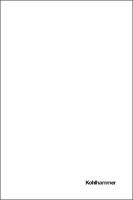Chapter The cost-effectiveness of what in health and care?
Author(s)
Mitchell, Paul Mark
Collection
WellcomeLanguage
EnglishAbstract
Assessing the value for money offered by new health technologies is playing an
increasingly important role in aiding decision-making in health and care. Even
in a pre-COVID-19 world, international healthcare systems were struggling to
meet the demands of their patient populations and the rising cost of new
health technologies, such as pharmaceuticals. With the impact of the corona virus pandemic on the global economy and the provision of other health and
care services more generally, difficult decisions will continue to be required
over what basket of health and care services are available to the general popu lation.
Health economists have developed methods to aid decision-makers who
want to improve population health as the primary goal. Tools such as quality adjusted life years (QALYs) combine health-related quality of life and quantity
of life into a single outcome. QALYs allow for population health to be maxim ised. However, there is debate over whether the quality of life content cap tured by QALYs is too narrow. In addition, the aim of maximisation in health
may be at odds with other goals of health and care, such as reducing health
inequalities.
This chapter discusses some of the key steps involved in the construction
of the QALY to value patient benefits from health and care interventions, and
also how the QALY is commonly used in economic evaluation to aid healthcare
decision-making. A critique and an alternative to QALYs is also provided.
Evaluating peoples capabilities has been proposed as an alternative to
health focused outcomes, such as QALYs, to inform health and care decision making. Developed initially by nobel prize winning economist and philosopher,
Amartya Sen, capabilities represent what a person is able to do and be in life
that they have reason to value. Although health functionings are an important
component of Sen’s Capability Approach, using QALYs does not fully extend
the evaluative focus on to how such health outcomes and other non-health
functionings are reflective of what people can and cannot do in their life that
they have reason to value. Aiming to get people to a decent or sufficient level
of capability also provides an alternative to the health maximisation objective
commonly pursued in health economic evaluations.
Adopting a different quality of life measurement approach in health eco nomic evaluations, as well as a new objective, has important implications for
what patients and treatments are prioritised in health and care. Previous re search has shown how interventions that improve quality of life for patients
with mental health conditions and more severe health conditions will be more
favourably treated using a capability measure. It is also recognised that health
inequality has largely been neglected in the singular focus of QALY maximisa tion. Shifting to a “sufficient capability” objective may help address efficiency
and equity concerns without the need for more complex economic evaluation
frameworks that require dual objectives to deal with population health and
health inequality simultaneously.


 Download
Download